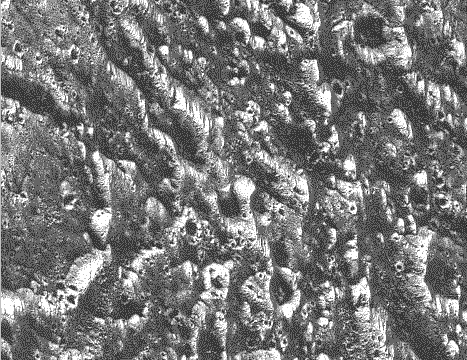Explanation: The largest moon in the Solar System shows regions that are ancient and battered. The high density of craters demonstrate that patches of Ganymede are indeed billions of years old. This photo is one of a series released by NASA two days ago from the Galileo spacecraft orbiting Jupiter. The large impact crater on the left is 19 kilometers across, while dark indentations in Ganymede's crusty surface-ice run diagonally. Ganymede is composed of half rock and half water-ice. The Galileo spacecraft will continue to orbit Jupiter over the next 16 months and send back data about Jupiter and its four largest moons: Io, Europa, Ganymede, and Callisto.
APOD's Archive of Galileo at Ganymede
1999 2000 2001 2002 2003 2004 2005 2006 2007 2008 2009 2010 2011 2012 2013 2014 2015 2016 2017 2018 2019 2020 2021 2022 2023 2024 2025 |
Yanvar' Fevral' Mart Aprel' Mai Iyun' Iyul' Avgust Sentyabr' Oktyabr' Noyabr' Dekabr' |
NASA Web Site Statements, Warnings, and Disclaimers
NASA Official: Jay Norris. Specific rights apply.
A service of: LHEA at NASA / GSFC
& Michigan Tech. U.
|
Publikacii s klyuchevymi slovami:
galileevy sputniki - krater - Ganimed
Publikacii so slovami: galileevy sputniki - krater - Ganimed | |
Sm. takzhe:
Vse publikacii na tu zhe temu >> | |
